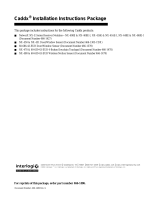
Armar y Desarmar
Page 15 Manual de Usuario de Agility
Chapter 2 Armar y Desarmar
The following chapter describes how to operate your LightSYS locally from the LCD
keypad. For system operation from other accessories, refer to the instructions supplied
with the product.
As a user of your security system, you'll mostly be concerned with the keypad.
The LightSYS LCD keypad is the primary system interface. Each keypad in your system
reports its status via its LCD icons, as described below. Through its keys, you can enter
commands to arm and disarm the system, bypass intrusion zones, report emergencies, and
more, as described in the subsequent chapters of this manual. For detailed information
regarding the keypad interface, refer to the instruction supplied with the keypad.
Notas:
1. There are two types of LCD keypads, with and without proximity for non-contact arming
and disarming.
2. Each keypad in the system is assigned to a particular partition, meaning that commands
entered in a keypad are implemented only in the partition to which it is assigned. For
example, pressing the Quick Arm key on a keypad assigned to partition 1 arms only partition 1
Armar el sistema
Armar el sistema provoca que los detectores de intrusión disparen una alarma ante una
intrusión. You can arm your system by code arming, in which you need to use your user
code, or you can use quick arming (without using a code).
Nota:
If during code setting you enter a wrong user code, the keypad produces three
short beeps. Press quickly and re-enter the sequence correctly.
Recuerde, la protección contra los incendios y la protección ofrecida por las teclas de
emergencia del teclado numérico están siempre armadas y siempre disponibles.
Antes de armar el sistema
1. Comprobar el LED de Listo
y cerciorarse de que el sistema esté preparado
para armarse.
2. Make sure that the system includes no violated zones and is ready to be armed.
3. Si el sistema NO está listo para ser armado, asegurar o anular la zona/s abiertas y
después proceder (see page 37)





















